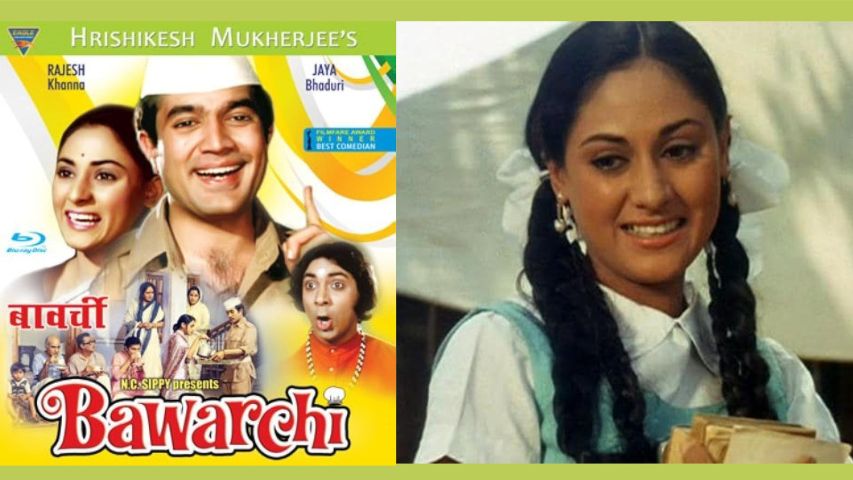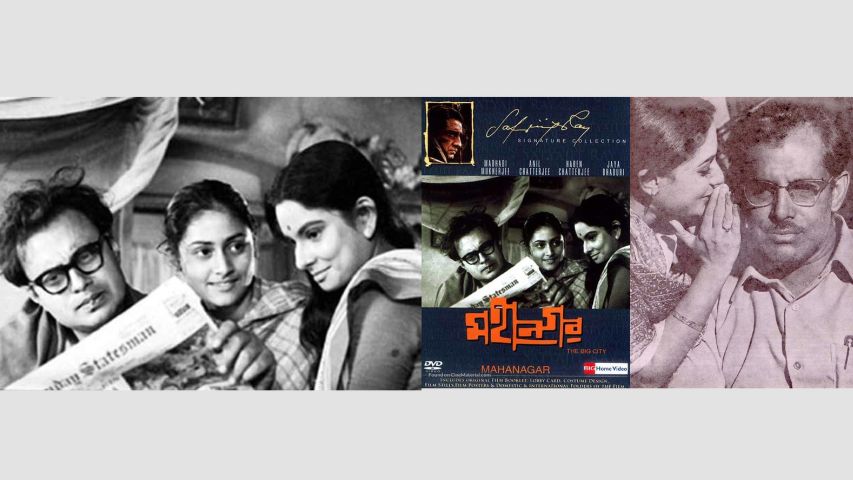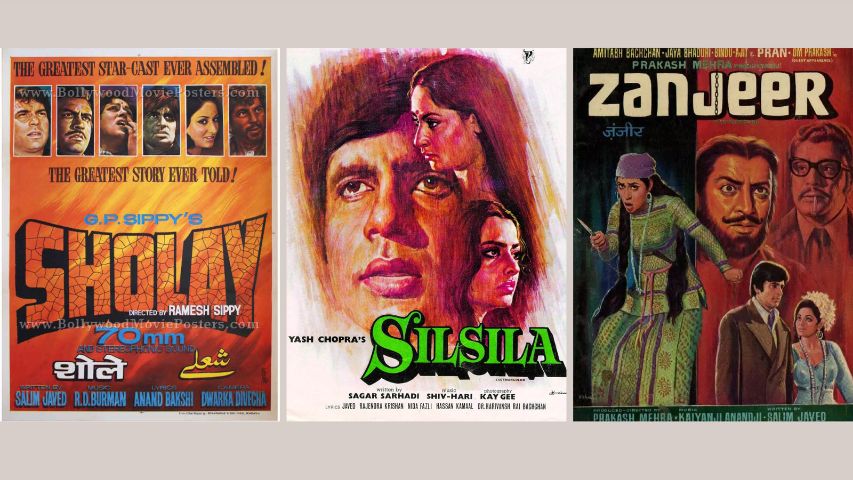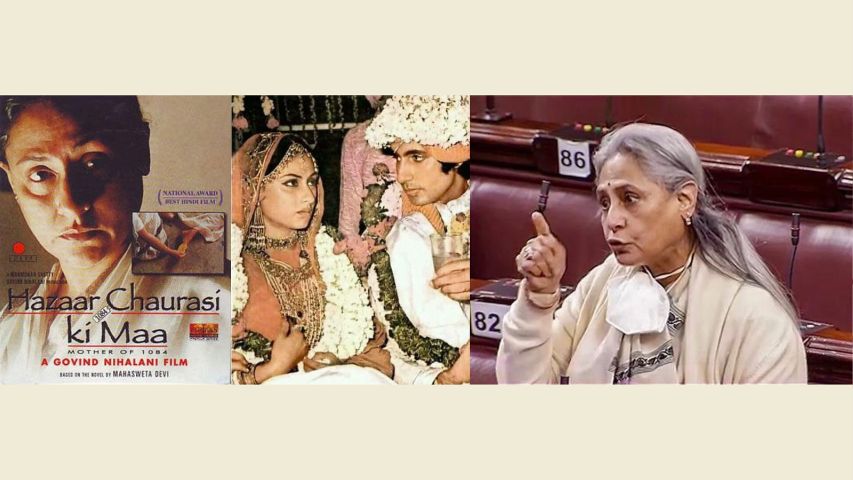-853X543.jpg)
JAYA BHADURI: SIGNATURE-SUPERSTARDOM REVISITED
by Aparajita Krishna November 3 2023, 12:00 am Estimated Reading Time: 7 mins, 22 secs“Jaya Bhaduri’s diminutive physical frame had cast a large image across the screens of India”, writes Aparajita Krishna.
I have noted ‘The Archies’ scheduled release on 7th December 2023. Yahan pe choti Guddi ki Badi Kahaani ‘Sunoh’!
Jaya Bhaduri was the biggest female film actor-star of Hindi cinema of the 1970s. She in her own way defined stardom and carried most of her films on her petite frame and strong shoulders. She drove the box-office collection as a superstar of her times - no doubt, though, that Mother India, in which Nargis played the title role, continues to be the most valuable reference for Hindi cinema’s women actors. As per Box Office India, by 2017 Mother India had over 100 million footfalls at the domestic box-office, making it one of the highest-grossing-Indian films of all time (taking inflation to account).
Most of Jaya Bhaduri’s meritorious films had a good run at the box-office. Almost all were in perfect-sync creatively and as revenue earners. Pathaan (2023) earned Rs 1,050,30 crores at the box-office and without taking anything away from the talented Alia Bhatt’s stardom and superhits, one has to make note that the hydra-headed marketing, publicity and revenue-earning verticals of the day are force-multipliers. I am not going to be churlish and quote the figures of Kangana Ranaut’s latest Tejas to give a counter-narrative. (My frightened emojis).
Jaya Bhaduri of the 1970s was a quiet, organically and naturally grown phenomenon. She was one of the highest paid actresses. In flashback, there was not much of an audience-driven global market for revenue earning of Indian films in the ‘70s. The film-screen count was far less too. Today there are many platforms to showcase films. However, many Indian films across languages have since been applauded at international film festivals and some have even won awards and cash prizes.
Jaya Bhaduri’s diminutive physical frame had cast a large image across the screens of India. In my memory there still reside girls in Muzaffarpur (my hometown in Bihar) who so internalized, consciously or subconsciously, the Jaya Bhaduri persona that they would giggle, smile, talk and dress like her in real life. Despite not being a fashion-fashionista, she came to be a reference point for look-management for scores of girls and young women in India.

Daughter of Taroon Kumar Bhaduri (journalist, author, poet) and Indira Bhaduri, Jaya Bhaduri, born a Bengali, surely benefited in her command over the Hindi language through her stay at Bhopal. She was born in Jabalpur in Madhya Pradesh in 1948. As a 15-year-old she made her screen debut in Satyajit Ray’s Mahanagar (1963). A liberal, progressive home environment, perhaps, facilitated her graduation, with a gold-medal, from FTII Pune.
A Wikipedia search mentions her having appeared in a 13-minute short film ‘Suman’ and in the Bengali film ‘Dhanyee Meye’ (1971). As an adult actor her first role in a Hindi feature film was that of the title role in Guddi (1971), directed by Hrishikesh Mukherjee. It became a commercial success and how! Guddi preceded Bobby (1973).
Jaya Bhaduri’s entry into Hindi films was in perfect sync with the times. It was that time in India, and its cinema, when the large middle-class as cine-goers was also in near complete sync with real-life films and exceptional music. There were star secretaries, PROs and film magazines back then as well, but not the kind of hyperbolic event manager, staff-retinue, image-maker overkill as it is today. Yet Jaya Bhaduri and the actors of those days, not working in a virtual world of connectivity, seemed to personally inhabit most mohallas, lanes and Indian homes. Film magazines as the only source of film information was to me akin to academic course-books. Bless my departed parents who were teachers, academics, Left-Political comrades, who never stopped me from reading and devouring film-magazines.
Jaya Bhaduri lived her roles with her original and endearing mannerisms. And, the parts she played lived her. Just recall these successful films with her in the lead: Guddi, Uphaar, Koshish, Annadata, Kora Kagaz, Parichay, Bawarchi, Shor, Piya Ka Ghar, Jawani Diwani, Phagun, Anamika, Doosri Sita, Nauker. Even her films that fared averagely at the B.O. were content rich - Ek Nazar, Bansi Birju. They were her first two films with the then emerging actor Amitabh Bachchan. As per film-lore Zanjeer was made with Amitabh Bachchan in the lead also because Jaya Bhaduri willingly agreed to play a secondary role opposite Amitabh Bachchan. This super-hit film of 1973 went on to break the jinx on Amitabh Bachchan’s trail of flops. As a couple they went on to pair in Abhimaan (1973), Chupke Chupke (1975), Milli (1975) and Sholay (1975).
It would not be an exaggeration to say that Jaya Bhaduri, back in the 1970s, paved the way for the success of Shabana Azmi, Vidya Sinha, Zarina Wahab, Rameshwari, Smita Patil and others. In her prime she drove the box-office, which was not the case with the above-mentioned female actors. I recall actor Swaroop Sampat being, quite unfairly, seen as an imitative Jaya.

The new-wave Hindi cinema of Kumar Shahani, Mani Kaul, Shyam Benegal, Govind Nihalani, Sai Paranjpe and others was to later emerge with its own pool of fine actors, but Jaya Bhaduri’s films with Hrishikesh Mukherjee, Gulzar, Basu Chatterjee, B R Ishara and others garnered more popular appeal across Indian audience demographics. In Sholay (1975), she featured in an important role among a galaxy of character actors.
Her withdrawal from the scene, post motherhood, was also the time when art-house Hindi cinema and regional films were telling compelling, analytical and diverse themed interventionist stories. The middle-of-the-road films, she was known to do, were replaced by gritty and socialistic themes.
In Hindi cinema, actors Shabana Azmi, Smita Patil, Deepti Naval reaped good harvest, but Jaya Bhaduri’s performances had already covered a wider range and versatility. She had addressed dramatic, comic, romantic roles, a role of a murderer in Doosri Seeta, and had in her kitty some of the best female songs of all time. For mainstream Indian cinema-popularity hit songs are mandatory to put a stamp on an actor’s stardom.
Jaya Bachchan returned with Silsila (1981), but it was an apology of a film trying hard to handle an extra marital affair as the subject. The casting of Amitabh Bachchan, Jaya Bachchan and Rekha, intended to be ironic as well as a marketing gimmick, did not work. Sadly, it brought to me the re-appearance an artist who perhaps had lost touch with her artistic talent and riyaz. Years of being away from her craft were visible in her later performances too. Also, Indian cinema by then was offering alternatives, and globalization and technological connectivity was giving the common cine-goers access to world cinema.
It is indeed admirable that the aging Jaya Bachchan continued to remain connected with roles, gaps notwithstanding. In 1998 came Hazaar Chaurasi Ki Maa, Fiza (2000), Kabhi Khushi Kabhi Gham (2001), Kal Ho Na Ho (2003), Lagaa Chunari Mein Daag (2007), Drona (2008), and a Bangladeshi film Meherjaan (2011).
Actor Jaya Bhaduri of yore appealed to me far more. I am told she was in element in Rocky Aur Rani Ki Prem Kahani (2023). Taran Adarsh of Bollywood Hungama wrote, “Bachchan is electrifying. Her commanding presence, authoritative attitude and cold stares - this is a standout act that’s sure to be talked about by moviegoers.” I regret not having seen the film, but I smile at the compliment.

Among her other credits she’s been the writer of film Shahenshah (1988), the producer of the popular TV serial Dekh Bhai Dekh in 1993-1994 and the Bangla film Antarmahal (2005).
She has received several awards, including nine or twelve Filmfare awards (net search dilemma, another smiling emoji), the Bengal Film Journalist Association Award, Lifetime Achievement Awards and the Padma Shri.
Jaya Bachchan’s political alignment later with the Samajwadi Party made her a Rajya Sabha member from Uttar Pradesh in 2004. She has been a Rajya Sabha M.P. for four terms now. She also campaigned for the Trinamool Congress during the West Bengal legislative Assembly Election 2021. Whether one is in alignment with her politics or not, one has to make note that unlike many others she is playing her role as a parliamentarian with utmost sincerity. I also giggle at her problems with the paparazzi, which she consistently admonishes. (My last smiling emoji).

At the end of this article the point to be reiterated is that Jaya Bhaduri of the 1970s is a serious study of India - demographic, social, cultural. If the aesthetics and history survive, then Jaya Bhaduri, the actor, and her films will continue to be taught as reference points in schools of cinema. Cinema, after all, is a document that writes text for not only celluloid, but for civilization too.




-173X130.jpg)
-173X130.jpg)
-173X130.jpg)

-173X130.jpg)

-173X130.jpg)
-173X130.jpg)